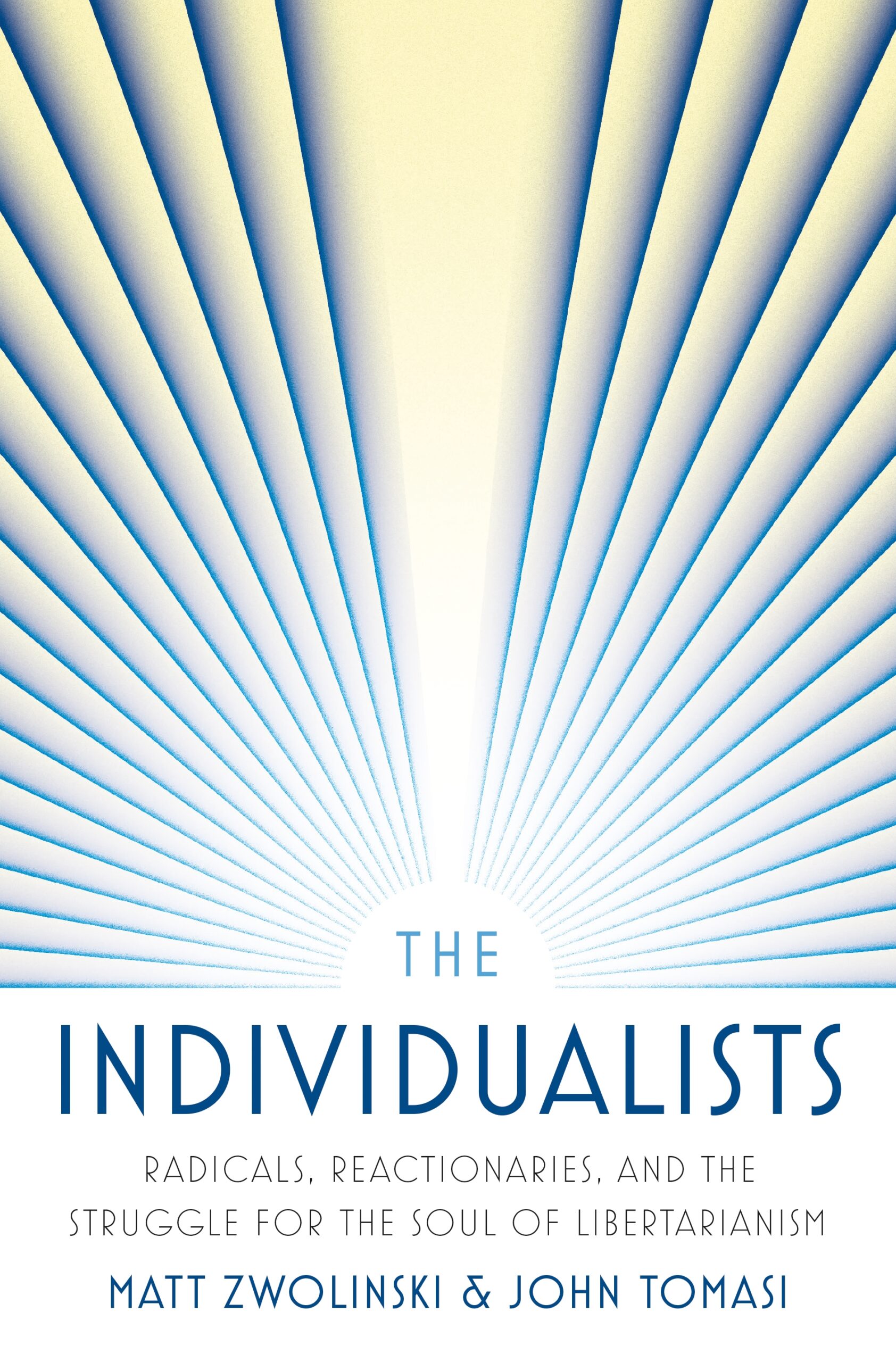Enter the libertarian multiverse

Published by: Princeton University Press

Boarding the ocean liner De Grasse in the Hague on a frigid winter morning of the year 1926, Alisa Zinovyevna Rosenbaum vowed never to return to the European continent. To her, it was a barren place haunted by the ghosts of a tumultuous childhood. On the passage to America, the shining city on a hill she longed for, she would reinvent herself and leave the past behind. Alisa Rosenbaum, student from Leningrad, became Ayn Rand, American writer and patron saint of the libertarian movement.
Ayn Rand never came back to Europe. In the last decade, however, the uncompromising vision of libertarianism she envisioned in novels such as The Fountainhead (1943) or Atlas Shrugged (1957) has seen an unprecedented revival on the continent. The influx of Randism is especially notable in the countries of the former Soviet bloc, the “collectivist” empire Rand had fled in her youth. The Serbian Ayn Rand Center Europe, founded as the Balkan Objectivist Center in 2016, for example, boasts about its activities across twenty-nine countries today. Recently, Bucharest and Amsterdam hosted large international conventions promoting Rand’s philosophy. Her firebrand version of right-wing libertarianism, popularly considered a uniquely American ideology, is spreading its zone of influence back toward the “old world”.
Notwithstanding this renewed interest in libertarian ideas, historical accounts of the origins of libertarian ideology have been scarce. Apart from various hagiographic treatments written by libertarian activists, scholars have tiptoed around the study of this multifaceted movement, focusing on more specific intellectual histories of the related doctrines of neoliberalism, Cold War liberalism, or conservatism instead. Matt Zwolinski and John Tomasi’s The Individualists aims to fill that gap. Granted, the authors self-identify as “Bleeding Heart Libertarians” (p. 8, 65) and are thus, technically, writing another story from within; nevertheless, The Individualists presents the most scholarly and balanced account of the movement’s history thus far.
According to Zwolinski and Tomasi, libertarianism experienced its heyday as an anti-communist ideology in the Cold War and fell into an identity crisis with the disappearance of its Soviet enemy in the 1990s.
Zwolinski and Tomasi define libertarianism as a “family of political theories” (p. 9) unified around six essential “commitments: property rights, negative liberty, individualism, free markets, a skepticism of authority, and a belief in the explanatory and normative significance of spontaneous order.” (p. 6) Notably, their definition privileges “skepticism” over the absolute anti-statism commonly associated with libertarianism, reflecting the authors’ position on the moderate side of the contemporary libertarian movement. Furthermore, they identify three “waves” of libertarian thought: the “primordial” libertarianism of the second half of the nineteenth century, a “Cold War era” from the 1930s to the 1980s, and a “Third Wave” of libertarianism, beginning with the fall of the Berlin Wall in 1989. According to Zwolinski and Tomasi, libertarianism experienced its heyday as an anti-communist ideology in the Cold War and fell into an identity crisis with the disappearance of its Soviet enemy in the 1990s (p. 63).
The Individualists aims to diversify the canon of thinkers popularly associated with libertarianism. Even though Ayn Rand’s biography (among others) serves the authors as a slightly overused narrative adornment, their book, above all, seeks to challenge the reduction of libertarian thought to a handful of authors, including Rand, Robert Nozick, Murray N. Rothbard, and Ludwig von Mises, all writing within the context of the American right. Zwolinski and Tomasi outline the varied nature of the libertarian movement in three ways: By pointing to the roots of libertarian ideas in the works of French and British thinkers such as Frédéric Bastiat, Gustave de Molinari, and Herbert Spencer; by widening the definition beyond “strict” anti-statist libertarianism to include neoliberal thinkers such as Friedrich A. Hayek; and by underlining the leftist-progressive roots of American libertarianism stemming from anarchist-socialists like Benjamin Tucker or abolitionists such as Lysander Spooner. Zwolinski and Tomasi manage well to broaden the canon of libertarianism to an impressive array of thinkers. Unfortunately, however, their chronology, which distinguishes between “primordial” and “Cold War” libertarianism, all too often ends up confirming rather than challenging the Americentrism they seem initially critical of.
Six topical chapters explore the dimensions of libertarian thought by tackling the relationship between private property, labor, and natural law (Chapter 3), unpacking the libertarian attitude towards the state (Chapter 4), investigating the movement’s entanglement with business leaders and free market capitalism (Chapter 5), exploring justifications of and remedies for social inequalities in the discourse around spontaneous order (Chapter 6), debating the perspective of race in the history of individualism (Chapter 7), and asking in how far solutions to global problems can be reconciled with the libertarian principle of nonintervention (Chapter 8). The topical section that makes up the latter two-thirds of The Individualists artfully weaves in the six markers of libertarian thought the authors identify in their first chapter with broader concerns that often speak to contemporary politics as much as they do to specific historiographies. By tracing these themes through “three eras” of libertarianism while simultaneously looking at developments in Britain, France, and the US, the authors again underline the diversity of the libertarian canon.
The Individualists has considerable merit as a comprehensive, largely impartial scholarly overview of the thus far much neglected intellectual history of libertarianism in Western Europe and the United States from the nineteenth century until today. All the same, it left me with the bitter taste of unanswered questions floating beneath the surface of their narrative.
Was there really no significant European libertarian movement in the second half of the twentieth century? Were there no libertarian currents in the global 1968 moment or in the protest movements that led to the fall of Soviet communism, such a seminal victory for the libertarian worldview?
Above all, I am wondering about the geographical scope of the authors’ analysis: While it certainly is true that large parts of the libertarian movement “followed Rand in moving to America” (p. 55) at the beginning of the Cold War, is this not reducing libertarianism again to the strictly right-wing orientation the authors supposedly challenge? Was there really no significant European libertarian movement in the second half of the twentieth century? Were there no libertarian currents in the global 1968 moment or in the protest movements that led to the fall of Soviet communism, such a seminal victory for the libertarian worldview? Europe remains libertarian terra incognita after the Second World War in the pages of The Individualists.
Within the context of American history—clearly the book’s focus—the authors suggest a transfer of libertarian ideas from the political left to right. It remains unclear, however, how this political changeover came to pass. While the New Deal and Cold War anti-communism are plausibly constructed as seminal moments in history, actors’ critiques of these moments (such as Rothbard’s story of the New Deal cited on p. 148-155) seem to suggest the possibility of a different chronology that predates these events. Further, writers like Isabel Paterson, Rose Wilder Lane, or Garet Garrett, all of whom espoused largely conservative positions before the New Deal, are mentioned as catalysts for the movement, complicating the question of the beginning of right-wing libertarianism even further.
Most importantly, The Individualists shies away from engaging with paradoxically authoritarian claims on libertarianism today. Even though the attack on democracy by self-avowed libertarians becomes increasingly more visible—embodied, for example, by Argentine president Javier Milei, a self-proclaimed libertarian who denigrated feminists and climate activists as enemies of freedom—the authors largely shrug off historicizing the question of anti-democratic tendencies when describing Augusto Pinochet’s dictatorship in Chile (supported by neoliberals like Hayek) as a simple example for “the libertarian ambivalence toward democracy” (p. 130) and dubbing Trumpism a phenomenon “on the dark edges of the libertarian movement.” (p. 66)
The result is that Zwolinski and Tomasi miss out on genuinely exploring the depths of the libertarian multiverse. While The Individualists provides a handy apparatus to define libertarianism as a political theory, it neither ventures into the inventiveness of the libertarian left—think cyberpunk, gonzo journalism, or squatters’ movements—nor into the techno-utopianism of the libertarian right—think seasteading, longevity, or prometheanism. As the global interest in libertarian ideas is increasing, it would be essential to emphasize that libertarianism can be much more than a Randian egoism at all costs while simultaneously shedding light onto the “dark edges” of the movement to reveal the assault on democracy as an assault on liberty. Though The Individualists provides a basic toolset for understanding libertarianism’s historical roots, its authors’ political bias prevents the book from truly exploring the movement’s diversity and its implications for the political culture of our times.
Dennis Kölling is a PhD Researcher in Intellectual History at the European University Institute in Florence, Italy, and a Doctoral Fellow at the Leibniz Institute for European History in Mainz, Germany. His dissertation examines how American libertarian writers popularized Austrian economics in the form of speculative utopian fiction. Dennis’ broader research interests include the history of economic thought, the global history of the Cold War, and the rise of popular mass culture. His writing has appeared in Global Histories, the Journal of the History of Ideas Blog, and Jacobin, among others.
